Description
Product Overview
BPC-157 (Body Protection Compound-157) is a high-purity, synthetic pentadecapeptide composed of 15 amino acids (Gly-Glu-Pro-Pro-Pro-Gly-Lys-Pro-Ala-Asp-Asp-Ala-Gly-Leu-Val), derived from a protective protein found in human gastric juice. Supplied as a lyophilized (freeze-dried) powder in a 10mg vial, this peptide is designed exclusively for laboratory research purposes and is not approved for human or animal consumption. BPC-157 has garnered significant attention in preclinical research for its potential regenerative, anti-inflammatory, and cytoprotective properties, particularly in studies involving tissue repair, wound healing, and gastrointestinal health. This product is intended for use by qualified researchers in controlled settings, such as in-vitro experiments or animal model studies, to investigate its mechanisms and potential applications.
Explore our range of high quality collagen peptides and vital proteins collagen peptides, ideal for research on peptides for weight loss, peptides for muscle growth, peptides for skin, and other collagen peptides benefits using advanced biotech peptides.
Product Specifications
- Chemical Name: Body Protection Compound-157 (BPC-157)
- Molecular Formula: C62H98N16O22
- Molecular Weight: 1419.556 g/mol
- Purity: ≥99.55% (verified by third-party High-Performance Liquid Chromatography, HPLC)
- Average Mass per Vial: 10.39mg (nominal 10mg)
- Appearance: White, crystalline lyophilized powder
- Solubility: Soluble in bacteriostatic water, sterile saline, or acetic acid for reconstitution
- CAS Number: 137525-51-0
- Sequence: Gly-Glu-Pro-Pro-Pro-Gly-Lys-Pro-Ala-Asp-Asp-Ala-Gly-Leu-Val
- Form: Lyophilized powder in a sterile glass vial with rubber, pierceable stopper
- Intended Use: Laboratory research only (e.g., receptor-ligand binding studies, cell proliferation assays, enzyme activity assays, animal model studies)
- Packaging: Sealed 3mL or 5mL sterile glass vial, nitrogen-purged to prevent oxidation
- Stability: Stable for 3-4 months at room temperature; long-term storage at 2-8°C or below recommended
- Not Included: Bacteriostatic water, sterile saline, syringes, or other reconstitution materials
Research Applications
BPC-157 is a versatile peptide extensively studied in preclinical settings for its potential to influence various physiological processes. Its applications in research include:
Tissue Repair and Regeneration:
- Promotes healing of soft tissues (muscles, tendons, ligaments) and hard tissues (bones) by stimulating angiogenesis (new blood vessel formation) via upregulation of Vascular Endothelial Growth Factor (VEGF) and activation of the VEGFR2-Akt-eNOS pathway.
- Enhances collagen synthesis (type I collagen and reticulin) and extracellular matrix remodeling, improving wound tensile strength and tissue integrity.
- Accelerates recovery from surgical incisions, burn wounds, and deep tissue injuries in animal models.
Anti-Inflammatory Effects:
- Modulates pro-inflammatory cytokines (e.g., TNF-α, IL-6) and reduces neutrophil infiltration, mitigating excessive inflammation in damaged tissues.
- Inhibits oxidative stress markers, such as nitric oxide (NO) and malondialdehyde (MDA), creating an anti-inflammatory microenvironment conducive to healing.
Gastrointestinal Protection:
- Protects gastric mucosa and accelerates healing of gastric and duodenal ulcers, fistulas, and lesions in animal models.
- Supports recovery from conditions like leaky gut, irritable bowel syndrome (IBS), and inflammatory bowel disease (IBD) by stabilizing mucosal barriers and reducing oxidative stress.
- Enhances gastrointestinal motility and protects against NSAID-induced damage.
Neuroprotection and Nerve Regeneration:
- Promotes axonal growth and neural tissue preservation, supporting recovery from central and peripheral nervous system injuries.
- Exhibits potential in mitigating damage from traumatic brain injury, spinal cord injury, and peripheral nerve damage in preclinical studies.
Musculoskeletal Recovery:
- Accelerates healing of tendon-to-bone interfaces, ligament sprains, and muscle tears by enhancing fibroblast migration and proliferation.
- Supports bone repair by upregulating bone morphogenetic proteins (BMPs) and improving osteogenesis.
Cardiovascular and Systemic Effects:
- Enhances nitric oxide production to improve blood flow and vascular health.
- Demonstrates potential in protecting against ischemia-reperfusion injuries and supporting cardiovascular recovery in animal models.
Synergistic Research:
- Often studied alongside peptides like Thymosin Beta-4 (TB-500) for synergistic effects, as BPC-157 enhances actin production and fibroblast activity, amplifying tissue repair processes.
Mechanism of Action
BPC-157 exerts its effects through multiple molecular pathways, as observed in preclinical studies:
- Angiogenesis: Activates VEGF receptor 2 (VEGFR2) and downstream pathways (Akt, eNOS), promoting new blood vessel formation to support nutrient delivery and tissue repair.
- Growth Factor Modulation: Upregulates growth factors like VEGF, Transforming Growth Factor Beta (TGF-β), and Fibroblast Growth Factor (FGF), critical for cell proliferation and tissue remodeling.
- Collagen Synthesis: Enhances production of type I collagen and reticulin, strengthening connective tissues and improving wound closure.
- Anti-Inflammatory Pathways: Inhibits pro-inflammatory mediators and reduces reactive oxygen species (ROS), protecting cells from oxidative damage.
- Nitric Oxide Regulation: Balances NO production to enhance vasodilation without excessive oxidative stress.
- Cytoprotection: Stabilizes cellular membranes and protects against cellular stress, particularly in gastrointestinal and neural tissues.
Storage and Handling
Pre-Reconstitution Storage:
- Store at 2-8°C or below (refrigeration or freezer) for long-term stability (up to 2 years).
- Stable at room temperature (15-25°C) for 3-4 months, suitable for standard shipping.
- Keep in a dry, dark environment to prevent degradation from moisture or light.
Post-Reconstitution Storage:
- After reconstitution with bacteriostatic water or sterile saline, store at 2-8°C.
- Use within 30 days to ensure potency and stability.
- Avoid freezing reconstituted solutions, as this may degrade the peptide.
Handling Precautions:
- Use sterile equipment (syringes, needles, alcohol swabs) to prevent contamination.
- Sanitize the vial’s rubber stopper with an alcohol swab before piercing.
- Avoid shaking or agitating the vial during reconstitution to prevent peptide degradation.
Reconstitution Guidelines
To prepare the 10mg BPC-157 vial for research use:
- Required Materials:
- Bacteriostatic water (0.9% sodium chloride with 0.9% benzyl alcohol) or sterile saline.
- Sterile 3cc syringe with needle (e.g., 25-gauge).
- Alcohol swabs for sterilization.
- Procedure:
- Clean the vial’s rubber stopper with an alcohol swab.
- Draw the desired volume of bacteriostatic water (e.g., 10mL for a 1mg/mL concentration) into a sterile syringe.
- Slowly inject the water along the inner wall of the vial to avoid foaming or damaging the peptide.
- Gently swirl the vial (do not shake) until the powder is fully dissolved. Allow 10-20 minutes for complete dissolution, or use sonication if available in a laboratory setting.
- Concentration Examples:
- 10mL of bacteriostatic water yields 1mg/mL (1000mcg/mL), where 0.25mL = 250mcg.
- 5mL of bacteriostatic water yields 2mg/mL (2000mcg/mL), where 0.1mL = 200mcg.
- Adjust volume based on desired concentration for precise dosing in research experiments.
- Note: Use reconstituted peptide promptly and store properly to maintain stability.
Quality Assurance
- Purity Testing: Each batch undergoes third-party HPLC, mass spectrometry, and amino acid analysis to confirm ≥99% purity, ensuring no fillers (e.g., mannitol) or contaminants.
- Manufacturing Process: Produced via solid-phase peptide synthesis (SPPS) and lyophilized using cryodesiccation to create a stable, crystalline powder. Nitrogen-purged vials prevent oxidation during storage and shipping.
- Batch Consistency: Certificate of Analysis (CoA) available upon request, detailing purity, mass, and quality control results.
- Sterility: Vials are sterilized and sealed under strict conditions to ensure product integrity.
Safety and Regulatory Information
- Research-Only Product: BPC-157 is strictly for laboratory research and is not approved by the FDA or any global regulatory body for human or animal consumption. It is not classified as a drug, dietary supplement, food, or cosmetic.
- WADA Status: Listed under the S0 Unapproved Substances category by the World Anti-Doping Agency (WADA), prohibiting its use in competitive sports.
- Safety Precautions:
- Handle only in a controlled laboratory environment by trained personnel.
- Wear appropriate personal protective equipment (PPE), such as gloves and lab coat.
- Keep out of reach of children and unauthorized individuals.
- Dispose of unused or expired product according to local biohazard regulations.
- Quality Concerns: Due to its unregulated status, sourcing from reputable vendors is critical to avoid counterfeit or impure products. Verify vendor credentials and request CoA for assurance.
- Legal Compliance: Researchers must comply with local, national, and institutional regulations regarding the use of experimental peptides. BPC-157 may be restricted in some jurisdictions.
- Animal Model Findings:
- Accelerated healing of Achilles tendon injuries, muscle tears, and bone fractures in rats and rabbits.
- Reduced inflammation and pain in models of arthritis and soft tissue injury.
- Protected against NSAID-induced gastrointestinal damage and promoted recovery from surgically induced lesions.
- In-Vitro Studies:
- Enhanced fibroblast proliferation and migration in cell cultures.
- Increased expression of growth factors (VEGF, TGF-β) in endothelial cell lines.
- Reduced oxidative stress markers in gastric and neural cell models.
- Limitations: No human clinical trials have been conducted to establish safety or efficacy. Research is limited to animal and in-vitro studies, and results may not translate to human applications.
Potential Research Protocols
- In-Vitro Studies:
- Cell proliferation assays to study fibroblast and endothelial cell growth.
- Enzyme-linked immunosorbent assays (ELISA) to measure cytokine and growth factor expression.
- Oxidative stress assays to evaluate ROS reduction.
- Animal Studies:
- Rodent models of tendon, muscle, or bone injury to assess healing rates.
- Gastrointestinal injury models (e.g., ulcer induction) to study mucosal repair.
- Neurotrauma models to investigate nerve regeneration.
- Dosing Examples (Preclinical Studies):
- Typical doses in animal studies range from 10-20mcg/kg body weight, administered intraperitoneally, subcutaneously, or orally.
- In-vitro concentrations typically range from 1-10mcg/mL in cell culture media.
- Adjust dosing based on experimental design and research objectives.
Advantages of BPC-157 for Research
- High Stability: Lyophilized form ensures long shelf life and ease of transport.
- Versatility: Applicable to a wide range of research areas, including musculoskeletal, gastrointestinal, and neurological studies.
- High Purity: ≥99% purity minimizes interference from contaminants in experimental results.
- Ease of Use: Simple reconstitution process allows for precise dosing in laboratory settings.
- Extensive Literature: Supported by a robust body of preclinical research, providing a foundation for experimental design.
Limitations and Considerations
- Regulatory Status: Not approved for human use; research is restricted to laboratory and animal studies.
- Limited Human Data: Lack of clinical trials means safety and efficacy in humans are unknown.
- Ethical Considerations: Researchers must adhere to ethical guidelines for animal studies and ensure compliance with institutional review boards (IRBs).
Environmental and Safety Notes
- Environmental Impact: Dispose of vials, syringes, and reconstituted solutions as biohazardous waste per local regulations to prevent environmental contamination.
- Safety Protocols:
- Avoid inhalation or skin contact with lyophilized powder or reconstituted solution.
- Use a biosafety cabinet for handling if aerosolization is a concern.
- Store securely to prevent unauthorized access.
- Emergency Procedures: In case of accidental exposure, follow laboratory safety protocols, including rinsing affected areas with water and seeking medical advice if necessary.
Disclaimer
BPC-157 is sold exclusively for laboratory research purposes and is not intended for human or animal consumption. It is not a drug, dietary supplement, food, or cosmetic. Improper use may result in adverse effects. Researchers are responsible for complying with all applicable laws, regulations, and institutional guidelines. Always consult with qualified professionals and institutional review boards before initiating research. The information provided is based on preclinical studies and does not constitute medical or clinical advice.
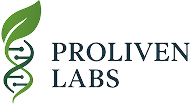

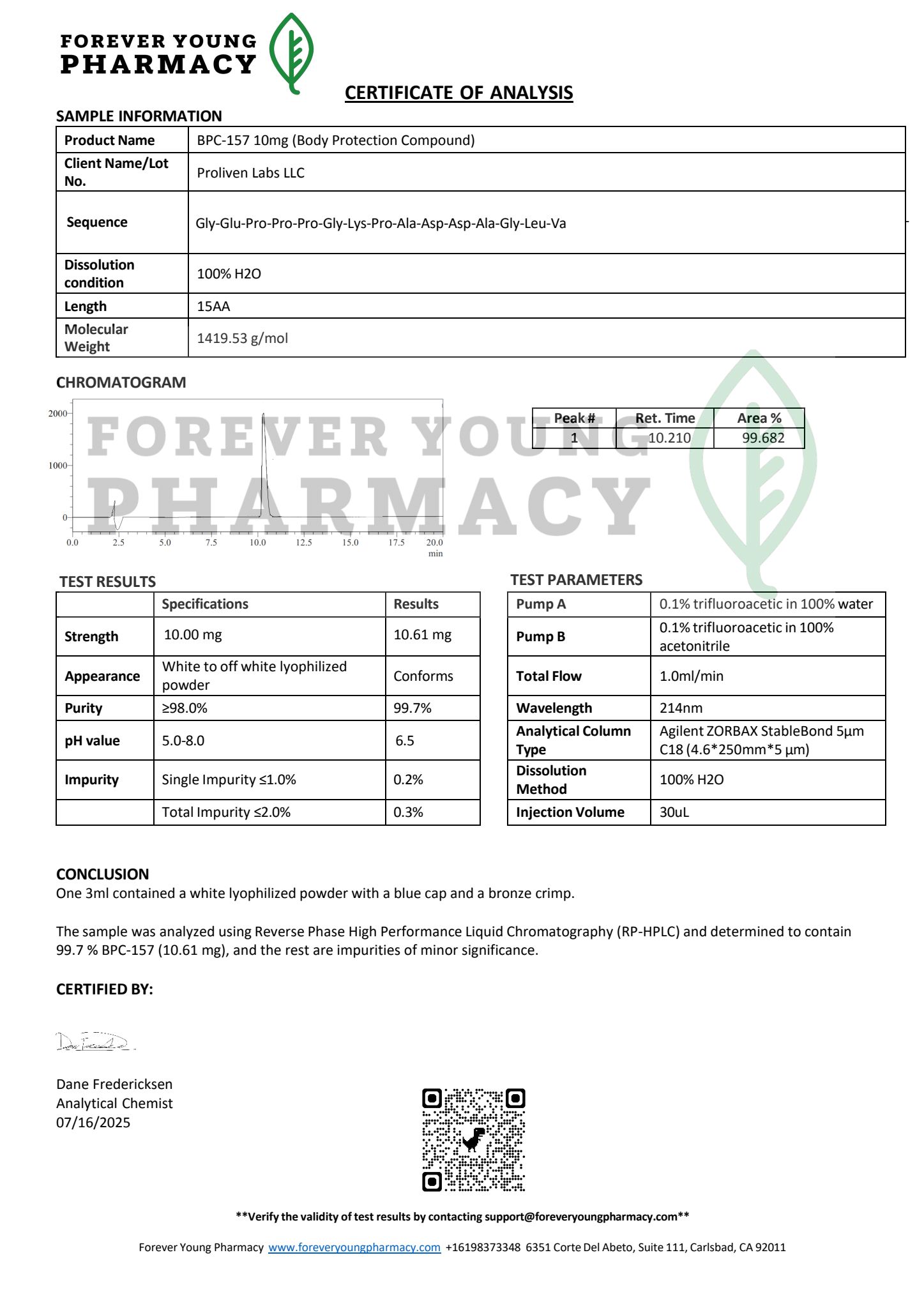

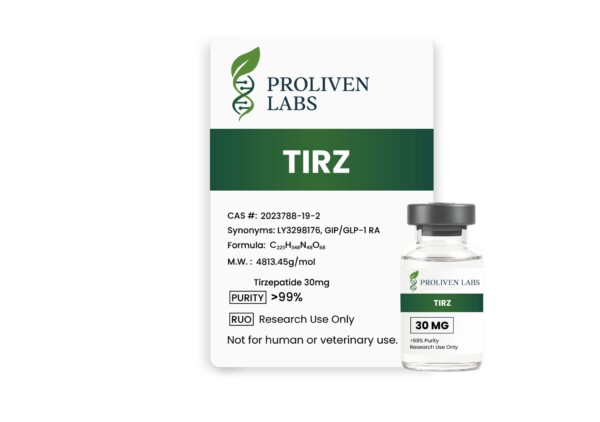
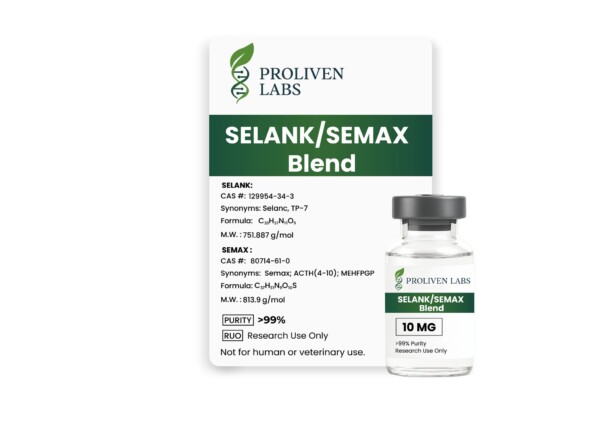
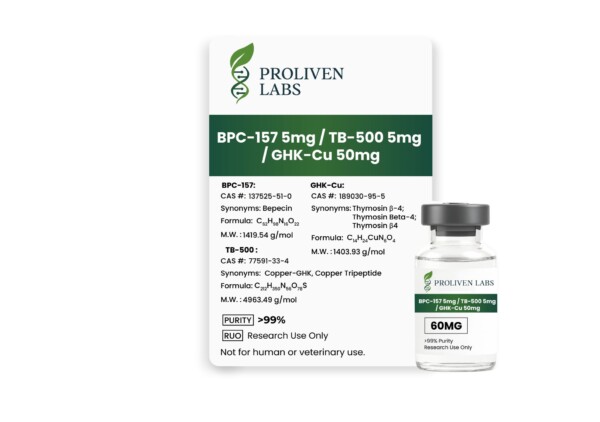
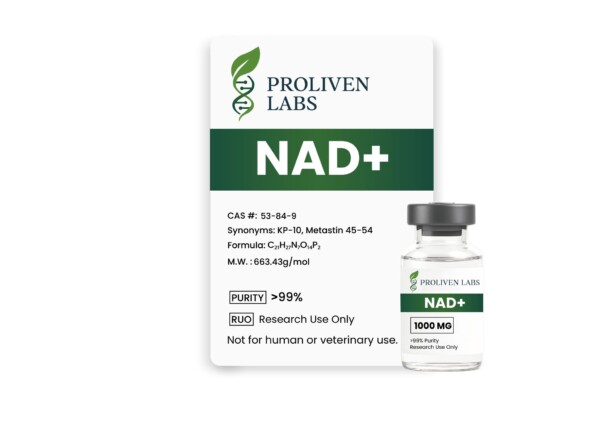

Reviews
There are no reviews yet.